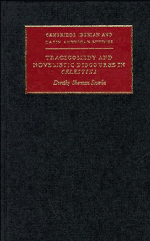Book contents
- Frontmatter
- Contents
- List of illustrations
- Preface
- Abbreviations
- 1 Introduction: Celestina and novelistic discourse
- 2 The prefatory material: the author's ambivalent intentions
- 3 Genre and the parody of courtly love
- 4 From parody to satire: clerical and estates satire
- 5 Verbal humour and the legacy of stagecraft
- 6 The rhetorical shift from comedy to tragedy: ironic foreshadowing and premonitions of death
- 7 Is Melibea a tragic figure?
- 8 Pleberio's lament, Cárcel de Amor, and the Corbacho
- 9 Conclusion: Rojas' ambivalence towards literature
- Notes
- Bibliography
- Index
- CAMBRIDGE IBERIAN AND LATIN AMERICAN STUDIES
8 - Pleberio's lament, Cárcel de Amor, and the Corbacho
Published online by Cambridge University Press: 05 March 2012
- Frontmatter
- Contents
- List of illustrations
- Preface
- Abbreviations
- 1 Introduction: Celestina and novelistic discourse
- 2 The prefatory material: the author's ambivalent intentions
- 3 Genre and the parody of courtly love
- 4 From parody to satire: clerical and estates satire
- 5 Verbal humour and the legacy of stagecraft
- 6 The rhetorical shift from comedy to tragedy: ironic foreshadowing and premonitions of death
- 7 Is Melibea a tragic figure?
- 8 Pleberio's lament, Cárcel de Amor, and the Corbacho
- 9 Conclusion: Rojas' ambivalence towards literature
- Notes
- Bibliography
- Index
- CAMBRIDGE IBERIAN AND LATIN AMERICAN STUDIES
Summary
Alfonso Martínez de Toledo's Corbacho and Diego de San Pedro's Cárcel de Amor are the Spanish vernacular texts which have contributed the most to Celestina, and it is not surprising to discover that they, as well as the Petrarchan sources, are prominent in the genesis of Pleberio's lament. Rojas undoubtedly took the ‘Llanto de su madre de Leriano’ as the prose model for his lament, although the planctus is a sturdy rhetorical tradition from ancient times and there is no shortage of models. The planctus was an important division of rhetoric with its own rules; it was a digressio from the laus or enkomion, itself a subdivision of the apostrophe. Certain rhetoric and imagery were obligatory: exclamatio and interrogatio, light and darkness imagery, the world-upside-down topic, the exclamation against death. Furthermore, most laments seem to have at least some of the ingredients of grief as it is clinically described in the twentieth century: shock and searching, anger and guilt, bargaining, grief itself, and acceptance.
In Cárcel, Leriano's mother begins with the praise of her son:
¡ tú en edad para bevir; tú temoroso de Dios; tú amador de la virtud; tú enemigo del vicio; tú amigo de amigos; tú amado de los tuyos!
(173)[You, of an age to live; you, a God-fearing man; you, a lover of virtue; you, an enemy of vice; you, a friend of friends; you, beloved by all your servants and vassals.]
- Type
- Chapter
- Information
- Tragicomedy and Novelistic Discourse in Celestina , pp. 105 - 116Publisher: Cambridge University PressPrint publication year: 1989



